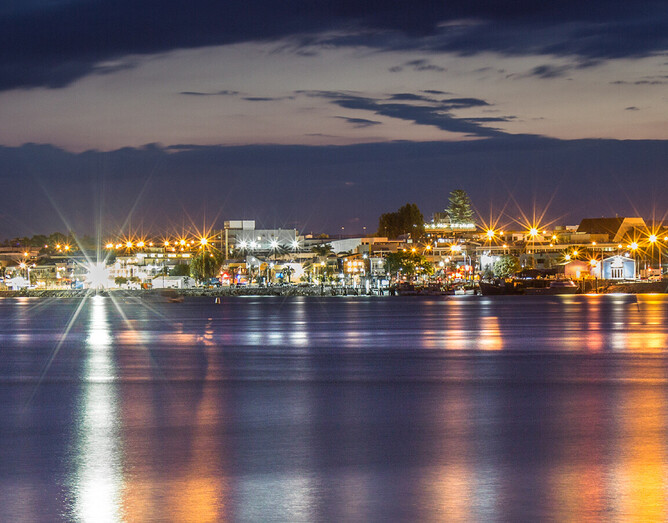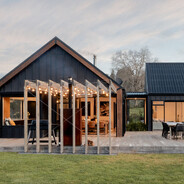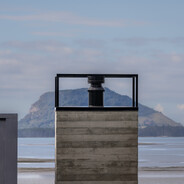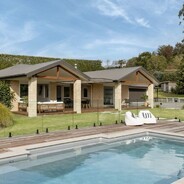Welcome to Tauranga, a city that showcases a blend of creativity and innovation through its architectural structures. From its waterfront to its city centre, Tauranga is continually developing to showcase a vibrant and unique city that attracts both locals and tourists.
In this article, we will take you on a journey through the architectural structures of Tauranga, uncovering the visionary minds behind these buildings. You'll discover how these skilled architects have brought their innovative concepts to life, creating spaces that not only captivate the eye but also enhance the way we live, work, and play.
From the iconic Tauranga Art Gallery, designed to be a haven for creativity, to the sensational Tauranga Crossing, a retail destination that offers a modern shopping experience, each architectural gem tells a story of vision, craftsmanship, and passion.
Join us as we unveil Tauranga's architectural treasures, exploring the intersection of artistry and practicality. Be inspired by the fusion of creativity, culture and innovation that has shaped the city's skyline.
Tauranga's rich architectural history
Tauranga's architectural history is a captivating tapestry that weaves together the city's cultural heritage and its evolution over time. From the early Māori settlements to the colonial era and beyond, the city's buildings have reflected the changing needs, aspirations, and design sensibilities of its inhabitants.
One of the earliest architectural influences in Tauranga can be traced back to the Māori people, who settled in the region centuries ago. These indigenous communities constructed intricate and functional structures, such as whare (houses), pā (fortified villages), and waka (canoes), that were seamlessly integrated into the natural landscape. These structures not only served practical purposes but also embodied the rich cultural traditions and spiritual beliefs of the Māori people.
As Tauranga transitioned into a colonial settlement in the 19th century, the architectural landscape underwent a remarkable transformation. The arrival of European settlers brought with it a new wave of design influences, resulting in the construction of grand colonial-style buildings, such as the historic streets in downtown Tauranga. These structures, with their ornate facades and symmetrical layouts, showcased the architectural styles prevalent in the colonial era, reflecting the aspirations and sensibilities of the new settlers.
Notable architectural landmarks in Tauranga
Tauranga's architectural landscape is dotted with numerous landmarks that have become iconic symbols of the city's rich cultural heritage and design ingenuity. One such landmark is the Tauranga Art Gallery, a stunning structure that serves as a hub for the city's vibrant art scene.
Designed by acclaimed architect Richard Priest, the Tauranga Art Gallery is a masterpiece of contemporary design. Its sleek, angular lines and expansive glass facades create a striking visual contrast with the surrounding cityscape, inviting visitors to step into a world of creativity and inspiration. The building's thoughtful layout, with its versatile exhibition spaces and inviting public areas, has made it a beloved destination for art enthusiasts and cultural explorers alike.
Another architectural gem in Tauranga is the Baycourt Community and Arts Centre, a multi-purpose facility that has become a hub for the city's performing arts and cultural events. Designed by the renowned architectural firm Jasmax, the Baycourt Centre boasts a striking modern design that seamlessly blends with the surrounding urban landscape. Its state-of-the-art performance spaces, including a grand auditorium and intimate theatres, have played host to a diverse array of concerts, plays, and cultural celebrations, cementing Tauranga's reputation as a vibrant centre for the arts.
The Tauranga Art Gallery (recently closed) and Baycourt will be undergoing a huge architectural renovation and upgrade to combine both these spaces as a central entertainment space and attract locals and visitors to the area for rich cultural experiences.
Contemporary architectural designs in Tauranga
Tauranga's architectural landscape has continued to evolve, with contemporary designers and architects pushing the boundaries of creativity and innovation. One such example is the Tauranga Crossing, a cutting-edge retail and entertainment destination that has become a landmark in the city's urban fabric.
Designed by the renowned architectural firm Ignite Architects, the Tauranga Crossing is a stunning blend of form and function. Its sleek, modern lines and innovative use of materials, such as glass and steel, create a visually striking structure that commands attention. But beyond its aesthetic appeal, the Tauranga Crossing is designed to provide a seamless and engaging shopping and entertainment experience, with its thoughtfully curated mix of retail outlets, dining options, and leisure facilities.
Another example of Tauranga's contemporary architectural structures is the Trustpower/Mercury headquarters, a state-of-the-art office building that showcases the city's commitment to sustainability and innovation. Designed by Studio Pacific Architecture, the Trustpower/Mercury headquarters features a striking, angular design that maximises natural light and ventilation, reducing the building's energy consumption and carbon footprint. The use of sustainable materials, such as timber and recycled steel, further enhances the building's eco-friendly credentials, making it a shining example of Tauranga's dedication to green architecture.
Unique architectural features of Tauranga's buildings
Tauranga's architectural landscape is characterised by a diverse array of unique features that contribute to the city's distinct identity and visual appeal. One such feature is the incorporation of Māori cultural elements into the design of various buildings, reflecting the city's deep connection to its indigenous heritage.
The Tauranga City Council building, for instance, features a striking exterior design that pays homage to traditional Māori patterns and motifs. The building's facade is adorned with intricate carvings and geometric patterns, creating a visually captivating and culturally significant structure that stands as a testament to the city's commitment to celebrating its Māori roots.
Another unique architectural feature in Tauranga is the use of natural materials, such as timber and stone, to create a harmonious relationship between the built environment and the surrounding natural landscape. This can be seen in the design of the Tauranga Waterfront, where the use of these natural materials, combined with thoughtful landscaping, has resulted in a seamless integration of the city's urban spaces and its picturesque coastal setting.
We are excited to watch the Tauranga City Council Building take on a new architectural form as it is recreated in the city centre as part of the highly anticipated city upgrade.
The influence of Maori culture on Tauranga's architecture
Tauranga's rich Māori heritage has had a profound influence on the city's architectural landscape, with many buildings and structures incorporating elements of Māori design and cultural symbolism.
The influence of Māori culture can also be seen in the design of public spaces throughout Tauranga. The city's parks and gardens often feature traditional Māori landscaping elements, such as carved pou (posts) and waka (canoes), creating a seamless integration of the built environment and the natural world. These cultural elements not only enhance the visual appeal of the spaces but also serve as a reminder of the deep-rooted connection between the Māori people and the land.
Sustainable architecture in Tauranga
Tauranga's commitment to sustainability is reflected in the city's architectural landscape, with numerous buildings and structures incorporating eco-friendly design features and sustainable materials.
For instance, buildings like the Tauranga City Library have incorporated passive solar design to maximise natural light and reduce energy consumption. Additionally, projects such as the Beca Building utilise green roofs and rainwater harvesting systems to manage stormwater and enhance urban green spaces. Tauranga's favourable climate allows for widespread use of solar panels, exemplified by developments like the Bayfair Shopping Centre’s solar array, which helps lower its carbon footprint. By embracing these sustainable practices, Tauranga is not only addressing current environmental challenges but also setting a benchmark for future development, ensuring that growth aligns with ecological preservation and community well-being.
Architectural innovations in Tauranga
Tauranga's architectural landscape is a testament to the city's commitment to innovation and the pursuit of architectural solutions. From the incorporation of emerging technologies to the exploration of new materials and construction techniques, Tauranga's architects are constantly pushing the boundaries of what's possible.
One such example of architectural innovation in Tauranga is the use of advanced digital design tools and 3D modelling software to create highly detailed and customised building plans. This technology has enabled architects to explore complex geometries, optimise building performance, and streamline the construction process, resulting in more efficient and cost-effective projects.
Another area of innovation in Tauranga's architecture is the use of prefabricated and modular construction methods. These techniques, which involve the off-site fabrication of building components, have allowed for faster construction timelines, reduced waste, and greater flexibility in design. The Tauranga Crossing, for instance, features a modular design that allowed for the rapid assembly of its various retail and entertainment spaces, showcasing the potential of this innovative approach to construction.
Exploring Tauranga's architectural walking tours
Tauranga's architectural wonders can be best experienced through the city's vibrant and informative walking tours. These guided explorations offer visitors a unique opportunity to delve into the rich history, design, and cultural significance of the city's most iconic buildings and structures.
One popular walk takes visitors on a journey through Tauranga's historic downtown, where they can admire the grand colonial-era buildings that have stood the test of time. From the ornate facades of the Strand to the intricate detailing of the Masonic Centre, these walks provide a captivating glimpse into the city's architectural evolution and the stories that lie behind these timeless structures.
For those interested in Tauranga's contemporary architectural structures, the city offers walks that showcase the considered designs and sustainable features of its newest buildings. Visitors can explore the innovative Tauranga Crossing, the eco-friendly Trustpower/Mercury headquarters, and other architectural gems that have transformed the city's skyline, gaining insights into the visionary thinking and technical expertise that brought these projects to life.
Conclusion: Tauranga's architectural solutions
Tauranga's architectural landscape is a true testament to the city's rich cultural heritage, innovative spirit, and unwavering commitment to sustainability. From the historic colonial-era buildings to the cutting-edge contemporary structures, each architectural structure in Tauranga tells a unique story, inviting visitors and residents alike to explore and appreciate the fusion of creativity and innovation that has shaped the city's built environment.
As Tauranga continues to evolve, its architectural landscape will undoubtedly continue to captivate and inspire, showcasing the visionary thinking and technical expertise of the city's architects and designers. Whether you're drawn to the intricate cultural elements of Māori-influenced structures or the sleek, modern lines of sustainable buildings, Tauranga's architectural structures offer a truly immersive and enriching experience, one that celebrates the city's rich past while embracing its dynamic future.






